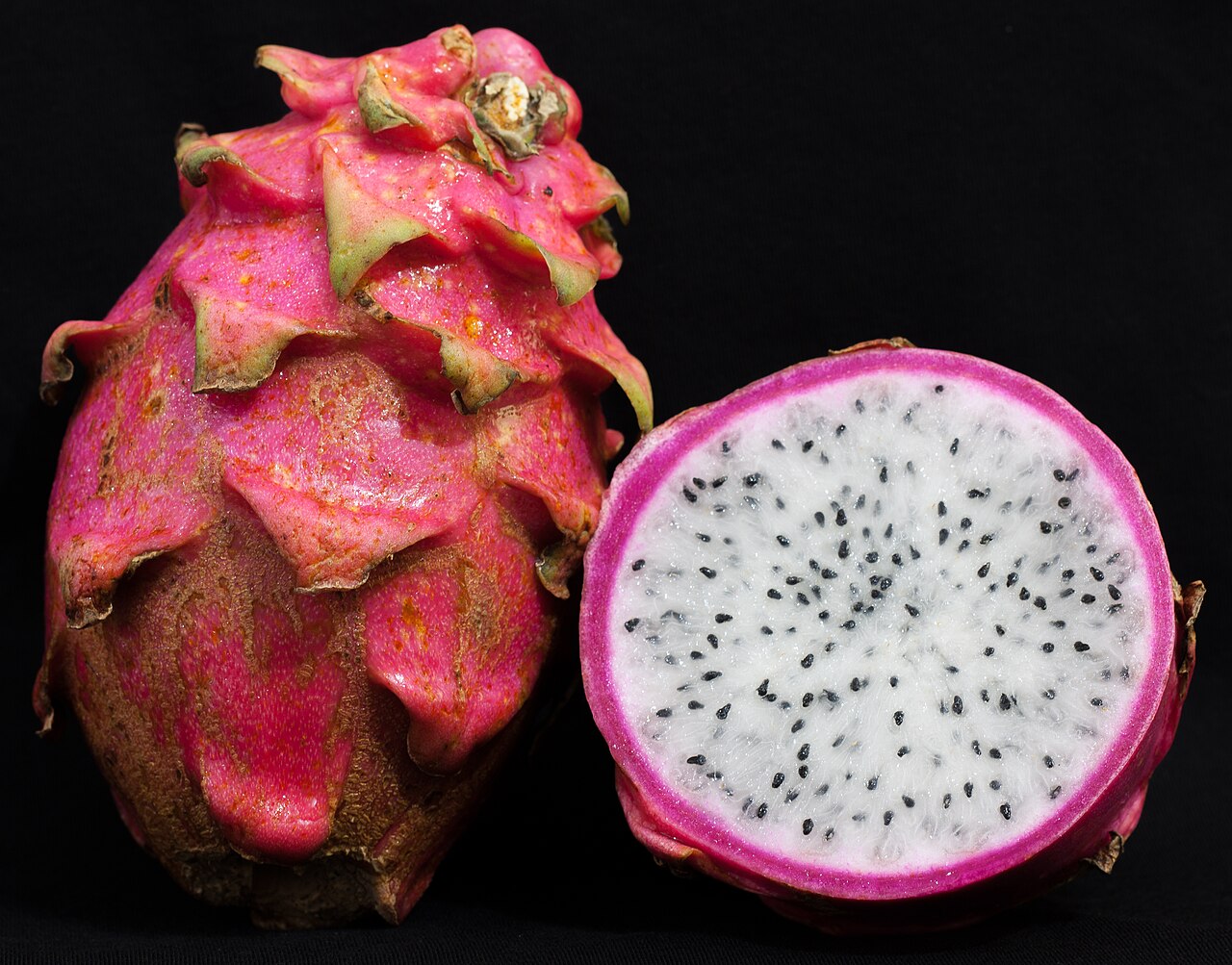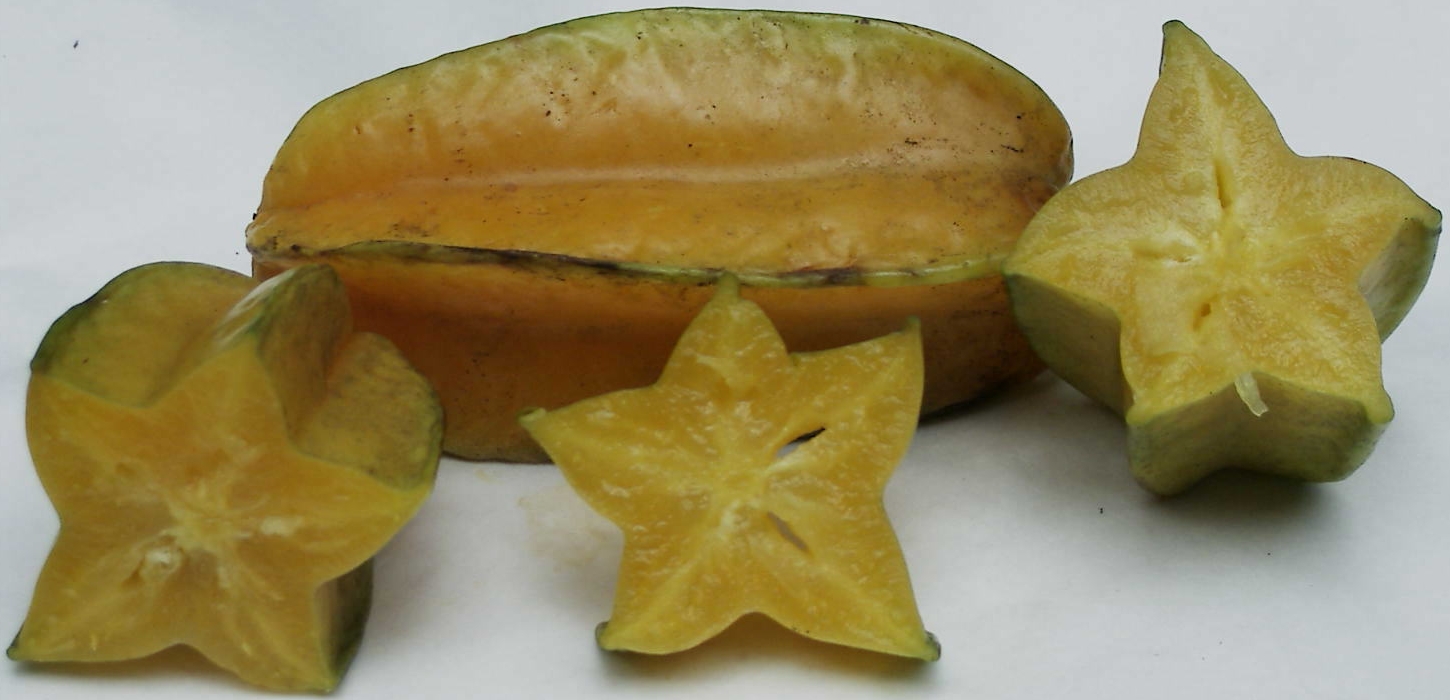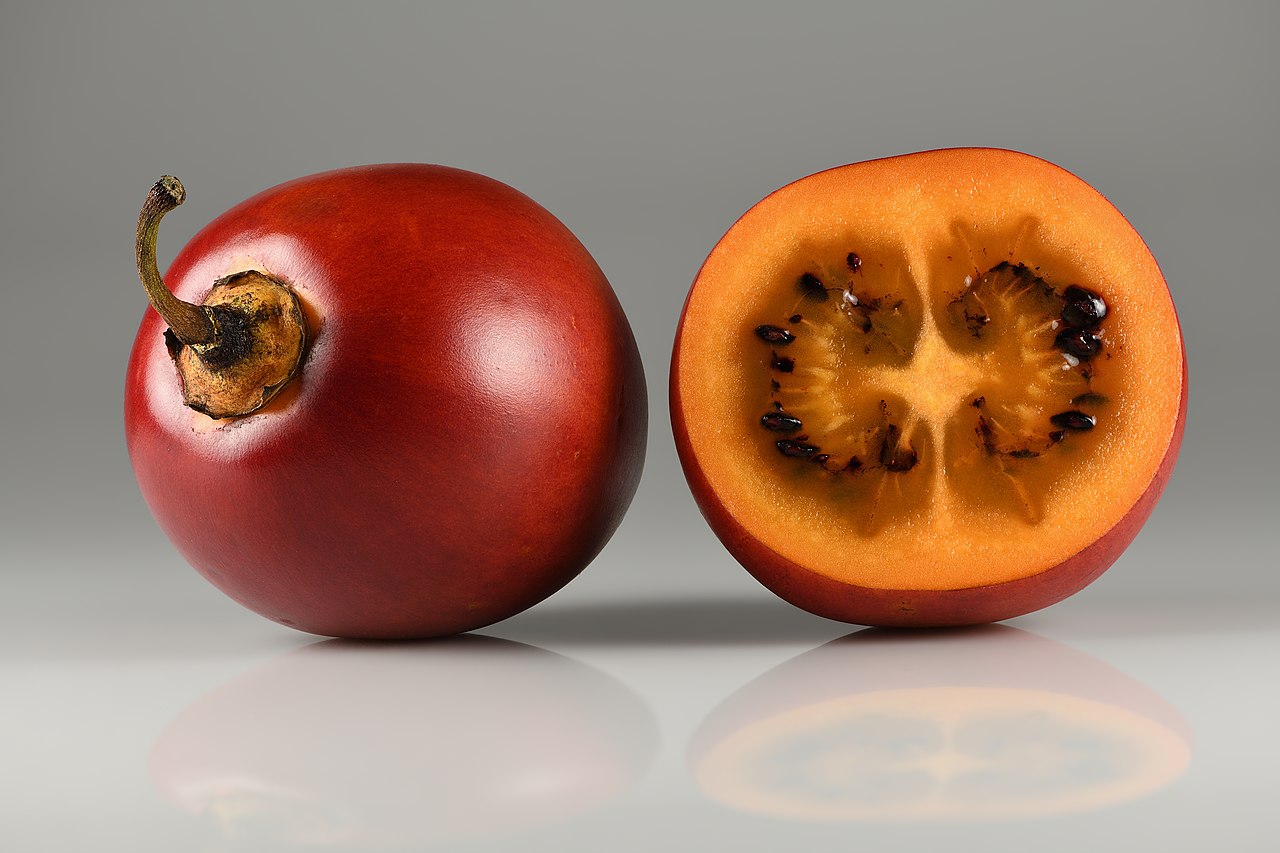Dragon fruit, kiwano and 9 other unusual fruits to try
 Illustrative photo (Freepik; all photos: Wikipedia)
Illustrative photo (Freepik; all photos: Wikipedia)
People can find exotic and tropical fruits in the aisles of many markets and special stores. These delectable treats come with varying flavors and are not always easy on the wallet, but they are definitely worth a try for everyone, accoring to Fruit Time and Wikipedia.
Dragon fruit (Pitahaya)
Dragon fruit, also known as Pitahaya, is a cactus family fruit. It can be pink (with white or pink flesh) or yellow.
In terms of taste, this fruit resembles a blend of kiwi and fig, accompanied by a rich aroma. Dragon Fruit can be enjoyed in its natural state or incorporated into desserts, fruit salads, and cocktails (after peeling the skin).
Benefits include:
- Detoxification and elimination of toxins from the body
- Normalization of blood sugar levels
- Strengthening the immune system
- Alleviation of discomfort in various chronic conditions

Horned melon (Kiwano)
Horned Melon, also known as Kiwano or African cucumber, is the fruit of herbaceous vines from the pumpkin family.
In terms of taste, this fruit is a mix of banana and cucumber with a citrus undertone. It can be consumed in its natural state or added to salads, ice cream, and cocktails. Before consumption, the fruit needs to be cut in half, and its juicy flesh scooped out with a spoon.
Benefits include:
- Stabilization of blood pressure
- Improvement of metabolism
- Blood thinning
- Stimulation of brain activity
- Strengthening of the immune system

Cherimoya
Cherimoya, also known as Annona or Graviola, is the fruit of a tree from the Annonaceae family.
This sweet and delicate fruit, with creamy notes, reminds one of a combination of strawberry, banana, pineapple, and papaya. Cherimoya can be consumed in its natural state or included in salads, desserts, smoothies, and cocktails. Before consumption, the fruit needs to be cut in half, and its flesh scooped out with a spoon.
Benefits include:
- Antibacterial effects
- Normalization of digestive organ function
- Restoration of liver cells
- Improvement of kidney function
- Regulation of the nervous system

Pepino
Pepino, also known as Pear melon or Sweet cucumber, is the fruit of sprawling shrubs from the passionflower family.
In terms of taste, this fruit is a mix of melon and pear, with juicy and sweet (slightly tangy) flesh in ripe fruit. Pepino can be consumed fresh or after heat treatment. It serves as an excellent complement to fish, meat, and poultry. It is used to prepare sauces, desserts, salads, jams, and even soups.
Benefits include:
- Acceleration of organ regeneration, especially the liver and kidneys
- Stabilization of the cardiovascular system
- Strengthening of blood vessels
- Improvement of gastrointestinal function
- Reduction of the risk of oncological diseases

Lychee
Lychee (lichzi, litchi, Chinese plum) is a single-seeded berry, the fruit of a tree from the Sapindaceae family. In India, lychee is referred to as the "fruit of love" due to its reputation as a natural aphrodisiac. Dried fruits are known as "lychee nuts" in various countries.
In terms of taste, lychee berries resemble grapes, with hints of kiwi, strawberry, citrus, and mint. It is best to consume these fruits fresh, although their skin and pits are inedible. Some enjoy making lychee jams or preserves. They also make a delightful addition to desserts and fruit salads.
Benefits include:
- Reducing the risk of atherosclerosis
- Eliminating bad cholesterol and other harmful substances from the body
- Preventing cardiovascular diseases
- Normalizing the nervous system
- Slowing down the aging process and improving brain function

Mangosteen
Mangosteen (mangustan, mangostin, Garcinia, mangosteen) is the fruit of a tree from the Clusiaceae family.
The taste of these fruits is juicy and sweet-sour, reminiscent of a combination of pineapple, grapes, strawberries, and peaches. Consuming mangosteen in its natural state is recommended, but it can also be added to fruit or vegetable dishes. Some use it to make purees and fillings for baked goods, as well as incorporating it into sauces and desserts.
Benefits include:
- Boosting the immune system
- Eliminating harmful bacteria
- Combating fungal infections of various origins
- Normalizing the function of most body systems
- Providing antioxidant effects

Carambola
Carambola (star fruit, starfruit, tropical star, star apple, five-angled fruit) is the fruit of a tree from the Oxalidaceae family.
The taste of these fruits varies depending on the region where they are harvested. Often, unripe carambolas found in markets have a sour taste, while fully ripe ones can have hints of apple, pear, grape, and orange.
It is best to consume carambola in its natural state. They can be added to fruit and vegetable salads, meat, or fish dishes, as well as desserts.
Benefits include:
- Improving digestion
- Normalizing the nervous system
- Increasing hemoglobin levels
- Eliminating harmful substances from the body
- Strengthening the immune system

Passion fruit (Granadilla)
Passion fruit (edible passion flower, edible passionfruit) is the fruit of rapidly growing vines from the Passifloraceae family.
The taste of the fruit is very sweet, with a slight tanginess, somewhat resembling the taste of melon.
Passion fruit can be eaten raw by cutting it in half, and its flesh, along with the edible seeds, scooped out with a spoon. The fruits are also used to prepare desserts, jams, and baked goods.
Benefits include:
- Regulating metabolism
- Assisting with avitaminosis and combating nervous exhaustion
- Regulating sleep and combating depression
- Enhancing immunity

Tamarillo
Tamarillo (tree tomato) is the fruit of a plant from the Passifloraceae family. It is also known as the tomato tree, mamarro, or tree tomato.
The taste of this fruit is sweet and sour, with a hint of acidity, reminiscent of a combination of currants, tomato, blackcurrant, and passion fruit.
It is best to eat tamarillo in its natural state, although some prefer canned fruits. Tamarillo is also used in various cuisines worldwide to make smoothies, sauces, soups, and stews.
Benefits include:
- Normalizing the function of the digestive system
- Detoxifying the body
- Stabilizing the nervous system
- Eliminating excess fluids from the body
- Preventing cardiovascular diseases
- Strengthening immunity

Salak
Salak (salacca, snake fruit) is the fruit of a palm tree native to Java and Sumatra.
This fruit stands out with a unique refreshing taste, resembling a combination of banana and pineapple with a slight nutty flavor.
It is consumed fresh, peeled. Salak can be used to make salads, cocktails, and desserts. It is less commonly found in recipes for meat and fish dishes.
Benefits include:
- Preventing avitaminosis and boosting immunity
- Regulating the function of the digestive system
- Preventing ophthalmological diseases
- Preventing cardiovascular pathologies
- Enhancing brain activity

Rambutan
Rambutan (hairy fruit, nephelium) is the fruit of an evergreen tropical tree from the Sapindaceae family.
Only the flesh of this fruit is edible (the skin is hairy, and the pit is toxic). In terms of taste, the flesh is very sweet and juicy, somewhat resembling grapes.
These fruits are most commonly eaten raw, biting into the flesh like an apple or pear. Rambutan is excellent for quenching thirst.
Benefits include:
- Preventing heart and vascular pathologies
- Increasing resistance to colds, flu, and respiratory infections
- Regulating metabolism
- Preventing depression, insomnia, and migraines
- Stabilizing the function of the digestive system


